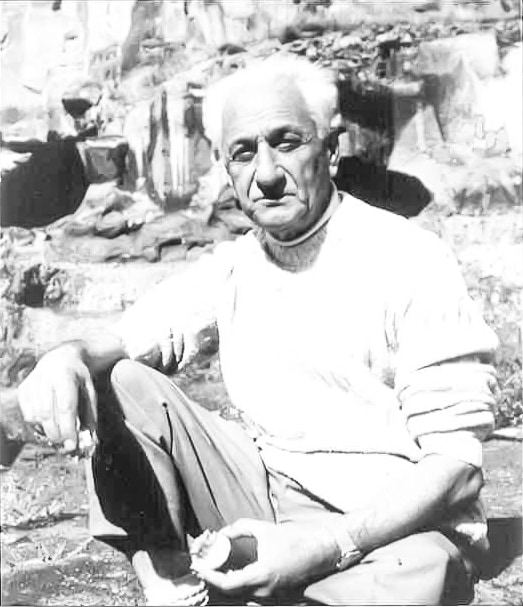Armen Zarian, architect, researcher, and intellectual, became one of the mainstays of Armenian-Italian cultural relations from the 1960s.
He was the middle son of the famous Armenian writer Kostan Zarian (1885-1969) and his first wife, Takouhi Shahnazarian (1891-1962), born in Constantinople on September 13, 1914. He was a toddler when he escaped with his parents and older brother from the capital of the Ottoman Empire in November 1914 before the borders were closed. In the following years, he went with his family to Italy (1915-1921), then back to Constantinople (1921-1922), Soviet Armenia (1922-1924), and back to Europe. He entered the Murad-Raphaelian Lyceum in Venice, from which he graduated in 1932.
In 1934, Armen Zarian enrolled in the Faculty of Architecture of the University of Venice, and then moved to Paris where he studied at the École des Beaux-Arts. In 1938, he continued his studies at the Faculty of Architecture of the University of Rome and graduated in 1941. He completed studies in Vienna (1943-1944), where he married Maria Gawronski, with whom he would have four children. He started his professional activities in the Austrian capital, working in interior decoration.
Upon his return to Rome in 1949, he joined an architecture studio, which won a project for a residential building in 1950 to be built in Tangiers (Morocco). Zarian moved to Morocco for the next four years and won the competition for the building of the Parliament in Tangiers. After returning to Rome, he advanced his career, projecting and realizing with Italian colleagues the building of the Automobile Club of Rome (1956-1959) and the Seraficum, the building of the Franciscan University (1961-1964).
In 1963, Armen Zarian and his family repatriated to Armenia. The fifty-year-old architect joined Yerevan Project, the architectural conglomerate that planned and executed the building projects for the capital, where he worked until his retirement in 1989. Meanwhile, in 1964-1969 he taught history of European architecture at the Polytechnic Institute (nowadays State Engineering University of Armenia) and worked as senior researcher at the Institute of Art of the Academy of Sciences (1965-1970). He earned his doctorate in Architecture in 1969.
Before settling in Armenia, Zarian and Italian architect Tommaso Breccia Fratadocchi had concluded an agreement to study Armenian architecture with the cooperation of the Faculty of Architecture of Rome and the Institute of Art of the Academy of Sciences. This cooperation enabled the first scientific campaign in Armenia (1966), led by architect Paolo Cuneo, who later founded the Center of Study of Armenian Architecture in Rome. In 1967, Zarian was among the founders of the Center of Study and Documentation of Armenian Culture in Milan, which undertook an extensive scholarly and publishing activity in the field of Armenian architecture, with the completion of the pioneering 24-volume collection of Documents of Armenian Architecture. From 1968 onwards, Armen Zarian was the coordinator of Armenian-Italian cultural relations. In 1976, he received the title of Architect Emeritus of Armenia.
Besides co-authoring six volumes in the series of Documents of Armenian Architecture, published in Italian, English, and Armenian, Armen Zarian was the author of various specialized monographs in Armenian: “Italian Modern Architecture” (1972), “Modern Architecture of Western Europe” (1979), “Essay on the History of City-Building in Ancient and Medieval Armenia” (1986), “The Armenian Architecture and the Armenian Hypothesis of Leonardo da Vinci” (1994). He was also one of several authors of the two-volume “Armenian Architecture” (in Italian) and wrote extensively on Armenian architecture, art, and Armenian-Italian relations in a variety of journals and periodicals. He participated in the first five conferences on Armenian art, held in Italy (1975, 1981, 1988) and Armenia (1978, 1985), as well as in the conference on the 1000th anniversary of Ani, organized by the Eastern Prelacy (New York, 1989).
After a prolific career, Armen Zarian passed away on May 30, 1994.

